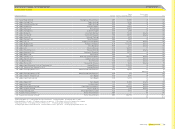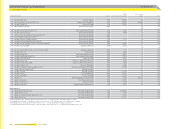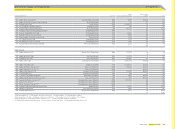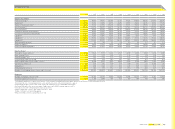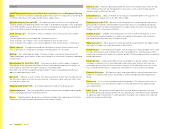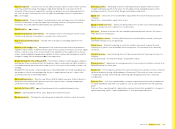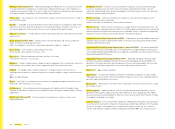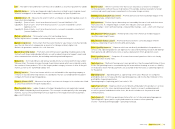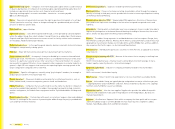Reebok 2008 Annual Report Download - page 213
Download and view the complete annual report
Please find page 213 of the 2008 Reebok annual report below. You can navigate through the pages in the report by either clicking on the pages listed below, or by using the keyword search tool below to find specific information within the annual report.
adidas Group Annual Report 2008 209
Currency exposure Currency risks for the adidas Group are a direct result of multi- currency
cash fl ows within the Group. The biggest single driver behind this risk results from the
mismatch of the currencies required for sourcing our products versus the denominations of
our sales. In order to minimise this risk, the adidas Group hedges itself on a regular basis.
see also Hedging
Currency-neutral Financial fi gures translated at prior-year exchange rates. This indicates
increases or decreases to reported fi gures by eliminating variances arising from currency
translation, thus refl ecting the underlying business performance.
Currency option see Option
Current asset intensity of investments Percentage of total assets tied up in current assets.
Current asset intensity of investments = current assets / total assets.
Days of sales outstanding (DSO) Average time of receipt of outstanding payments from
customers.
Demand-driven supply chain Management of up- and downstream relationships between
suppliers and customers to deliver the best value to the customer at the least cost to the supply
chain as a whole. A clear focus of the concept is this alignment of the supply chain to the cus-
tomers’ needs, bridging the gap between optimal customer relationship management and the
company’s supply chain management see also Supply Chain.
Diluted Earnings Per Share (Diluted EPS) Performance indicator used to gauge a company’s
earnings per share, assuming that all stock options, options and conversion rights related to a
convertible bond are exercised, which would result in an increase of the number of shares out-
standing.
Diluted EPS = (net income + interest expense on convertible bonds net of tax) / (weighted aver-
age number of shares outstanding during the year + weighted share options + shares from
assumed conversion of convertible bonds).
D & O liability insurance Directors and Offi cers (D & O) liability insurance. Protects directors
and offi cers from liability and litigation from actions against them, claiming wrongdoing in
connection to the company’s business.
Earnings Per Share (EPS) see Diluted Earnings Per Share and Basic Earnings Per Share
EBITDA Earnings before interest, taxes, depreciation and amortisation.
Electromyography Technique for evaluating and recording the activation signal of muscles.
Emerging markets Developing countries showing potential for growth in both economic
strength and private wealth in the future. For the adidas Group, emerging markets are the
developing countries of Asia, Eastern Europe, Latin America and Africa.
Equity ratio Shows the role of shareholders’ equity within the overall fi nancing structure of a
company.
Equity ratio = shareholders’ equity / total assets.
Equity-to-fi xed-asset ratio Defi nes the percentage of non-current assets fi nanced by equity.
Equity-to-fi xed-asset ratio = equity / non-current assets.
Fair value Amount at which assets are traded fairly between business parties. Fair value is
often identical to market price.
Family footwear channel Primarily North American retail distribution channel, catering for
affordable footwear across all age groups.
Finance lease Method of acquiring an asset that involves a lease with a special leasing
company for a specifi c, non-terminable initial leasing term. The investment risk is borne by
the lessee.
Financial leverage Ratio refl ecting the role of borrowings within the fi nancing structure of a
company.
Financial leverage = net total borrowings / shareholders’ equity.
Forward contract Agreement to exchange amounts of one currency for another currency at an
agreed fi xed rate at a future date.
Franchising Form of business by which the owner (franchisor) of a product, service or method
obtains distribution through affi liated dealers (franchisees). The franchisor offers assistance
in organising, training, merchandising, marketing and managing in return for a monetary
consideration.
Free cash fl ow Cash that is generated by a company’s operating activities after the deduction
of capital expenditure and other cash expenses such as taxes and interest from the operating
profi t.
Free cash fl ow = operating profi t + depreciation and amortisation (incl. goodwill) +/– changes in
operating working capital – capital expenditures +/- non-operating components.


